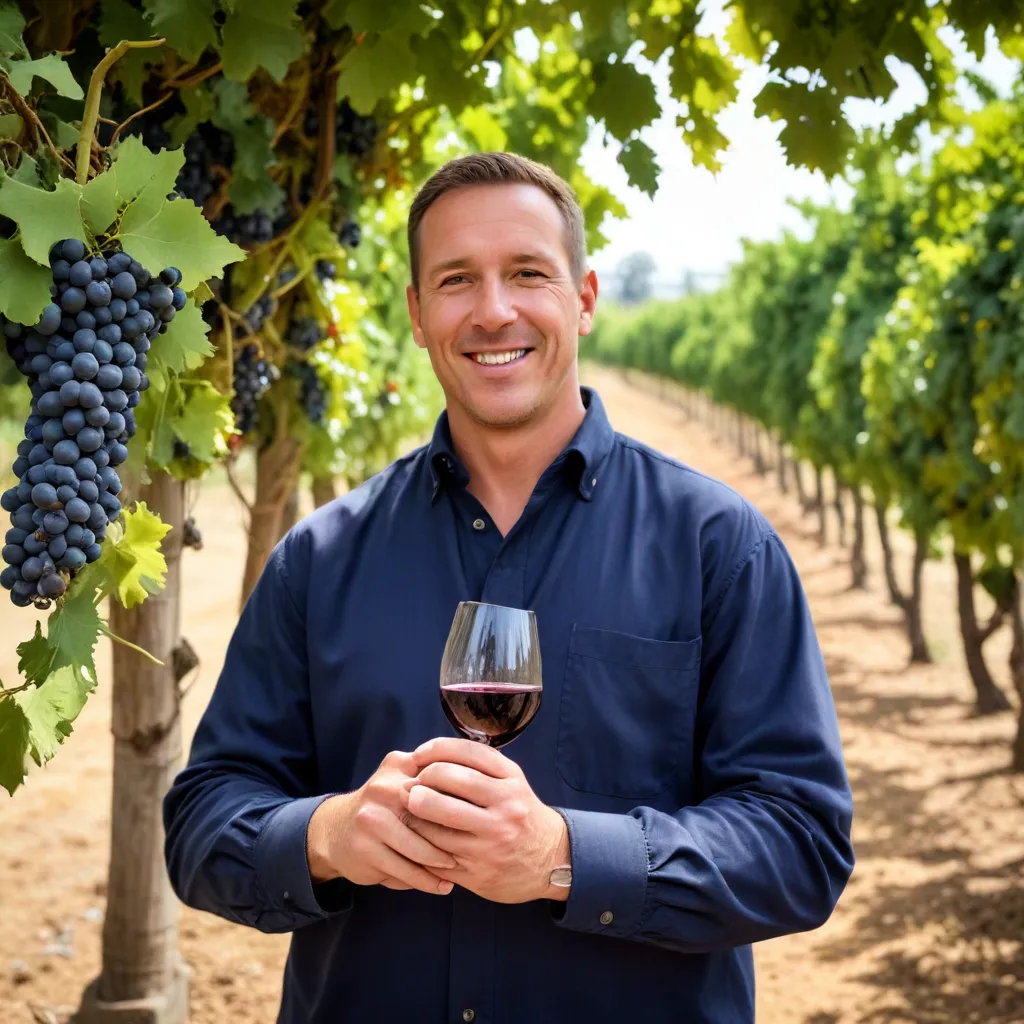
Grape to Glass: A Winemaker’s Perspective on Organic Viticulture
As a hospitality and wine expert for the Wine Garden Inn, I’m thrilled to share my insights on the fascinating world of organic viticulture – the art and science of growing grapes in harmony with nature. From the vineyard to the winery, this journey encompasses sustainable practices, biodynamic farming techniques, and a deep respect for the land that gives us these remarkable wines.
Sustainable Vineyard Management
At the heart of organic winemaking is a steadfast commitment to sustainable practices that nurture the land and its delicate ecosystems. The Sustainable Winegrowing New Zealand (SWNZ) program, widely recognized as a global leader, encapsulates this philosophy. Through continuous improvement and adherence to guidelines set by the International Organisation of Vine and Wine (OIV), SWNZ-certified wineries strive to deliver “excellent wine to consumers while helping the natural environment, local businesses and communities involved to thrive.”
This holistic approach encompasses everything from biodiversity preservation and responsible by-product management to meticulous soil care, air and water conservation, and innovative energy solutions. By monitoring, measuring, and repeatedly refining their practices, these forward-thinking vineyards set a shining example of what can be achieved when we work in harmony with the land.
Biodynamic Farming Techniques
Stepping further into the realm of organic viticulture, we encounter the captivating world of biodynamic farming. Inspired by the visionary ideas of Rudolf Steiner, biodynamic grape-growers follow a holistic, interconnected approach that treats the vineyard as a living, breathing organism.
Beyond the elimination of synthetic chemicals, biodynamic practitioners employ specialized plant, animal, and mineral preparations, as well as closely monitor the rhythmic influences of the sun, moon, and planets. This deep engagement with the natural cycles and energies of the land is said to unlock a profound synergy, leading to enhanced biodiversity, soil fertility, pest and disease management, and ultimately, a palpable vibrancy in the resulting wines.
During the meticulous annual audits required for biodynamic certification, every aspect of the vineyard’s operations is scrutinized to ensure compliance with the rigorous standards set by the Demeter Association. The commitment to this biodynamic philosophy is a true labor of love, one that seeks to nourish the very essence of the terroir.
Soil Health Importance
At the foundation of any thriving organic or biodynamic vineyard lies the health and vitality of the soil. Organic grape-growers recognize that this living, breathing medium is not merely a substrate for the vines, but a complex and interconnected ecosystem that must be carefully tended.
Through the strategic application of natural fertilizers, the incorporation of cover crops, and a deep understanding of soil composition and water-holding capacity, these dedicated stewards of the land nurture a robust and diverse microbial community. This, in turn, supports the vines’ ability to thrive, drawing on the optimal balance of nutrients and moisture while naturally defending against pests and diseases.
By prioritizing soil health, organic and biodynamic vineyards lay the groundwork for wines that truly reflect the unique terroir – the captivating blend of climate, geography, and geology that infuses each bottle with a sense of place.
Climate and Terroir Influence
Speaking of terroir, the influence of climate and environmental factors is paramount in organic viticulture. Whereas conventional viticulture may rely on irrigation and synthetic inputs to control variables, organic growers must work in harmony with the natural rhythms of their specific microclimate.
This means carefully selecting grape varieties that thrive in the region’s unique conditions, managing canopy growth to optimize sunlight exposure and moisture retention, and embracing the challenges presented by seasonal fluctuations. The resulting wines are not merely a product of human intervention, but a genuine expression of the land itself.
Varietal Selection Strategies
Alongside the emphasis on terroir, organic grape-growers must also navigate the strategic selection of grape varieties. While popular international varietals like Cabernet Sauvignon and Chardonnay have undoubtedly captured the global wine market, these grapes may not always be the best fit for a given region’s climate and soil.
Increasingly, forward-thinking organic vineyards are embracing indigenous or lesser-known grape varieties that are better suited to their local conditions. In New Zealand, for example, the rise of Organic Viticulture has seen a surge in the popularity of grapes like Chambourcin and Vignoles, which thrive in the region’s unique terroir and produce wines of exceptional quality and character.
By prioritizing these site-specific grape selections, organic winemakers can not only reduce their reliance on synthetic inputs but also craft wines that truly capture the essence of their land.
Pest and Disease Control
One of the primary challenges faced by organic grape-growers is the management of pests and diseases without the use of synthetic pesticides and fungicides. However, these dedicated stewards of the land have developed a suite of innovative, nature-based strategies to address these challenges.
From the strategic deployment of botanical insecticides and the encouragement of biological control agents to the meticulous monitoring of economic thresholds, organic vineyards employ a multifaceted approach that prioritizes prevention and equilibrium over heavy-handed interventions. This commitment to working in harmony with the land’s natural defenses ultimately results in healthier vines, more resilient ecosystems, and wines that are a true reflection of their origins.
Fermentation Methods
As the grapes make their journey from the vineyard to the winery, organic winemakers continue to embrace a philosophy of minimal intervention. During the fermentation process, these artisans eschew the use of synthetic yeasts, enzymes, and other additives, relying instead on the natural yeasts and bacteria present on the grape skins.
This native fermentation approach not only preserves the inherent character of the fruit but also allows for the development of unique, terroir-driven flavors and aromas. The resulting wines often exhibit a heightened sense of place, with each sip offering a captivating window into the vineyard’s distinctive personality.
Aging and Maturation
The journey from grape to glass continues with the aging and maturation process, where organic winemakers exercise a delicate touch. Rather than relying on heavy-handed techniques like micro-oxygenation or reverse osmosis, these artisans carefully select the appropriate vessels, be it traditional oak barrels or stainless steel tanks, to gently coax out the wine’s full potential.
The use of minimal or no added sulfites during this stage further reinforces the commitment to preserving the wine’s natural integrity. While this approach can result in a shorter shelf life and a more sensitive handling requirement, the rewards are evident in the wine’s vibrant, unadulterated expression of the grape and the land.
Sulfite Usage Debate
The topic of sulfite usage in organic winemaking is a nuanced and often debated one. While it’s true that organic wines must adhere to strict limits on added sulfites, it’s important to understand that sulfites are a natural byproduct of the fermentation process and are present in all wines to some degree.
Organic winemakers go to great lengths to minimize the need for added sulfites, relying instead on meticulous cellar practices, careful oxygen management, and the natural preservative properties of the wine’s own phenolic compounds. This approach not only reduces the overall sulfite content but also allows the wine’s intrinsic character to shine through unencumbered.
Carbon Footprint Reduction
As the world becomes increasingly conscious of our environmental impact, the organic winemaking movement has emerged as a shining example of how viticulture can be practiced in a way that minimizes its carbon footprint. From the use of renewable energy sources and water conservation strategies to the embrace of closed-loop waste management systems, organic vineyards are leading the charge in sustainable stewardship.
By reducing their reliance on fossil fuels, eliminating synthetic inputs, and promoting biodiversity, these forward-thinking producers are not only crafting exceptional wines but also contributing to the long-term health and resilience of the land they cherish.
Biodiversity Preservation
Organic and biodynamic viticulture’s commitment to sustainability extends far beyond the confines of the vineyard. These holistic approaches recognize the vital importance of preserving and enhancing biodiversity, both above and below the soil.
Through the strategic introduction of cover crops, the preservation of native habitats, and the encouragement of beneficial insects and wildlife, organic grape-growers create a vibrant, interconnected ecosystem that supports the overall health and balance of the land. This, in turn, fosters a more resilient and adaptive viticulture system, one that can better withstand the challenges of a changing climate.
As we raise a glass to these remarkable organic wines, we celebrate not only their exceptional quality but also the passionate stewardship that goes into their creation. From the vineyard to the bottle, this journey is a testament to the power of working in harmony with nature – a philosophy that not only produces exceptional wines but also safeguards the land for generations to come.
